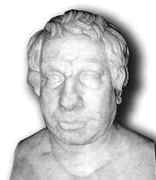Person: Giordano, Annibale

Annibale Giordano was an Italian-French mathematician and revolutionary who produced some works on geometry. He was involved in Republican plots against the Bourbon monarchy.
Mathematical Profile (Excerpt):
- Before giving details of his life, we need to look briefly at events which were taking place which in the end dominated the course of Annibale's life.
- Giordano, was a strong supporter of the French and this would dominate his life.
- From an early age Giordano showed that he has a great inclination to study and he later related that at by the time he was ten years old he already knew sufficient history, Latin and Greek that his teachers told him that they could not teach him any more.
- Giordano showed remarkable abilities in the mathematics that Fergola taught him and soon began studying on his own, reading Pappus's Mathematical Collection.
- Giordano generalised it to any number of points, publishing the result in 1788.
- Giordano's solution appeared in the paper Considerazioni sintetiche sopra di un celebre problema piano e risoluzione di alquanti problem affini Ⓣ(Synthetic considerations on a famous plane problem and solution of similar problems) which was published in the Memoirs of the Accademia dei XL (the National Academy of Sciences of Italy).
- We have to note however, that some biographers have been misled by the incorrect age given on the paper and have stated, incorrectly, that Giordano was born in 1771.
- Now it might be puzzling that Carnot refers to Giordano as 'Ottajano'.
- The reason is that Giordano's name appears on the paper as 'Annibale Giordano di Ottajano' so, in error, Carnot, and other French writers after him, believed that Giordano's name was Ottajano.
- In 1789 Giordano entered a competition for the chair of mechanics at the newly established Royal Military College Nunziatella.
- With the strong reference from Fergola, Giordano was appointed to the chair of mechanics at the Military College.
- In 1790, Giordano and Lauberg founded their own school for chemistry and mathematics at No 2 Vico Giganti, Naples.
- In 1792 Giordano and Lauberg had Principj analitici delle matematiche di Annibale Giordano e Carlo Lauberg Ⓣ(Analytical principles of the mathematics of Annibale Giordano and Carlo Lauberg) published by Gennaro Giaccio in Naples.
- Up to this time it appears that Giordano was simply looking to transform the monarchy but this meeting with the French turned his ideas into more extreme ones.
- This prompted Giordano to establish, on 29 January 1794, the central club of the Jacobins, which quickly split in two: the Romo (repubblica o morte - republic or death) presided over by Andrea Vitaliano and the Lomo (libertà o morte - liberty or death) which, led by Giordano together with Rocco Lentini, was proposing to achieve liberty with a reform of the monarchy into a representative body.
- While Michele-Girolamo succeeded in his attempt, Giordano was wounded and re-captured on that same night.
- Michele-Girolamo throwing himself to swim, managed to reach, it seems, a boat waiting for him offshore, and to save himself; Annibale, however, fell badly, fainted, and was found injured in the first light of dawn by the guards.
- Thus began a process that, on 19 September 1794, sentenced Giordano to serve twenty years on the island of Pantelleria which was later changed to the Castello dell'Aquila.
- Head of the courthouse was Luigi de Medici who had raised Michele-Girolamo and Annibale Giordano in his home.
- Because of this friendship and the Giordanos being treated more lightly than the others, Luigi de Medici (disliked in particular by his enemy, the minister John Acton) was suspected of collusion with the Jacobins, was himself arrested and made a prisoner in the fort of Gaeta until 1798.
- Much has been discussed about Giordano's role in those months.
- According to these authors the only victim of Giordano's informing was the same Medici, objective of an action aiming to secure for justice "the most cunning of the conspirators", that did not hesitate to send some young lives to the gallows in order to save his own life.
- This hypothesis is appealing, but other witnesses like Simioni, who claimed the number of those denounced by Giordano in the depositions he gave after his arrest were 259, cannot be ignored.
- In any case Giordano spent four years in prison, until December of 1798 when the French troops led by general Philibert-Guillame Duhesme conquered L'Aquila.
- On 27 January 1800 the state council, with the king's approval, sentenced Giordano to death.
- The two prisoners, the same Annibale Giordano, expert in betrayals, and Francesco Bassetti, general of the republic, who revealed the advanced escape plan to the head of the fort in exchange for their freedom.
- And in fact, seventeen men suffered the cruellest fate: the two lived an infamous life, that of Bassetti was short, while Giordano's was long but not miserable.
- In any case, Giordano's last years were never really "miserable".
Born 20 November 1769, Astalonga, San Giuseppe d'Ottajano, Kingdom of Naples (now San Giuseppe Vesuviano, Italy). Died 13 March 1835, Troyes, France.
View full biography at MacTutor
Tags relevant for this person:
Origin Italy
Thank you to the contributors under CC BY-SA 4.0! 

- Github:
-

- non-Github:
- @J-J-O'Connor
- @E-F-Robertson
References
Adapted from other CC BY-SA 4.0 Sources:
- O’Connor, John J; Robertson, Edmund F: MacTutor History of Mathematics Archive
